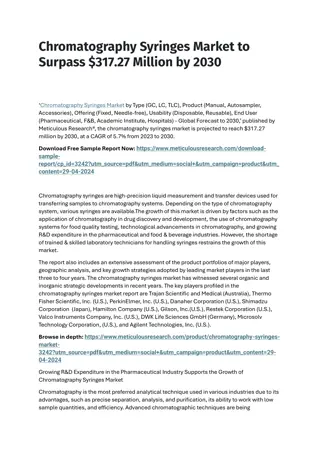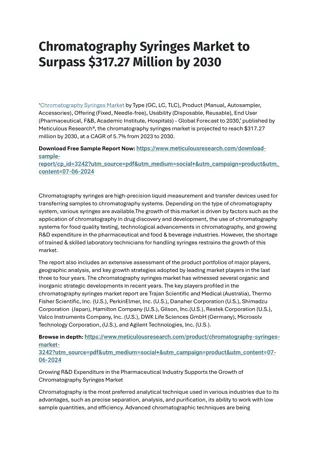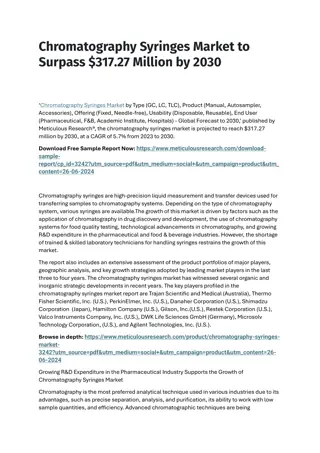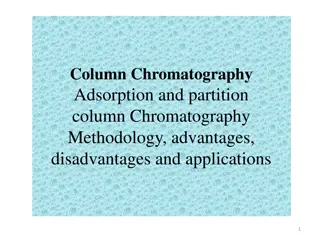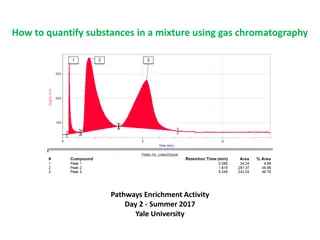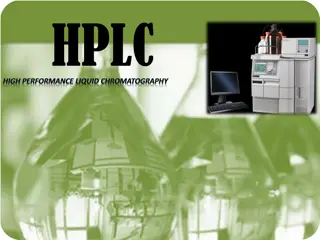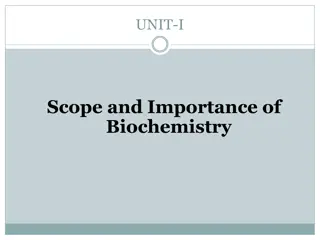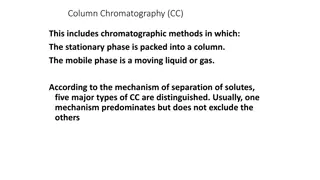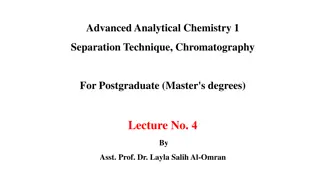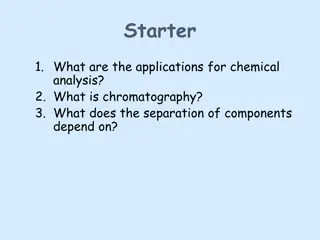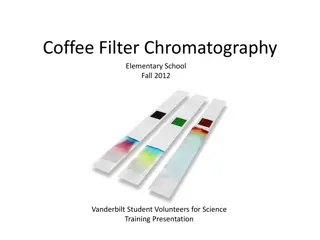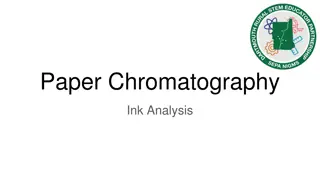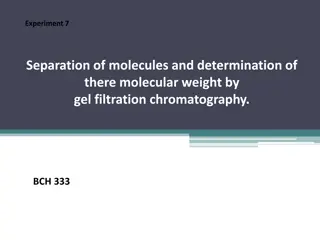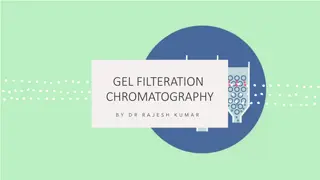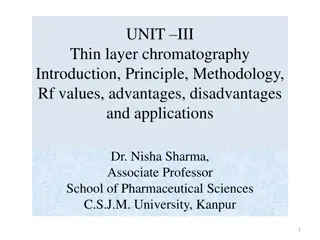Understanding Chromatography in Biochemistry: A Visual Guide
Explore the world of chromatography through a series of informative images covering principles, classifications, procedures, and significance of techniques like paper chromatography and thin-layer chromatography (TLC). Delve into the R value, two-dimensional chromatography, and learn about partition chromatography. Enhance your knowledge with detailed visuals and descriptions.
Download Presentation

Please find below an Image/Link to download the presentation.
The content on the website is provided AS IS for your information and personal use only. It may not be sold, licensed, or shared on other websites without obtaining consent from the author. Download presentation by click this link. If you encounter any issues during the download, it is possible that the publisher has removed the file from their server.
E N D
Presentation Transcript
CHROMATOGRAPHY Biochemistry of Medics 1
R value 14
Adsorption chromatography The substance loosely adsorbed to the stationary medium comes in the earlier fraction. 24
Ion Exchange chromatography- Procedure (Contd.) 28
Ion Exchange chromatography- An Overview Biochemistry of Medics 30
4) Gel filtration chromatography or Molecular Sieve chromatography 31
Gel filtration chromatography or Molecular Sieve chromatography 32
Gel filtration chromatography-An Overview Larger particles come out first, while smaller particles come in later fractions 33
Affinity chromatography- Significance By using antibodies, antigens can be easily separated. Conversely, antibodies can be purified by passing through a column containing the antigen. Specific Antibody binds to a specific antigen attached to the stationary medium, the remaining antibodies come out in earlier fractions. 36 Biochemistry of Medics
High performance liquid chromatography- Significance 39
High performance liquid chromatography- Apparatus Biochemistry of Medics 40
Gas liquid chromatography-Apparatus Biochemistry of Medics 43
Summary 44




